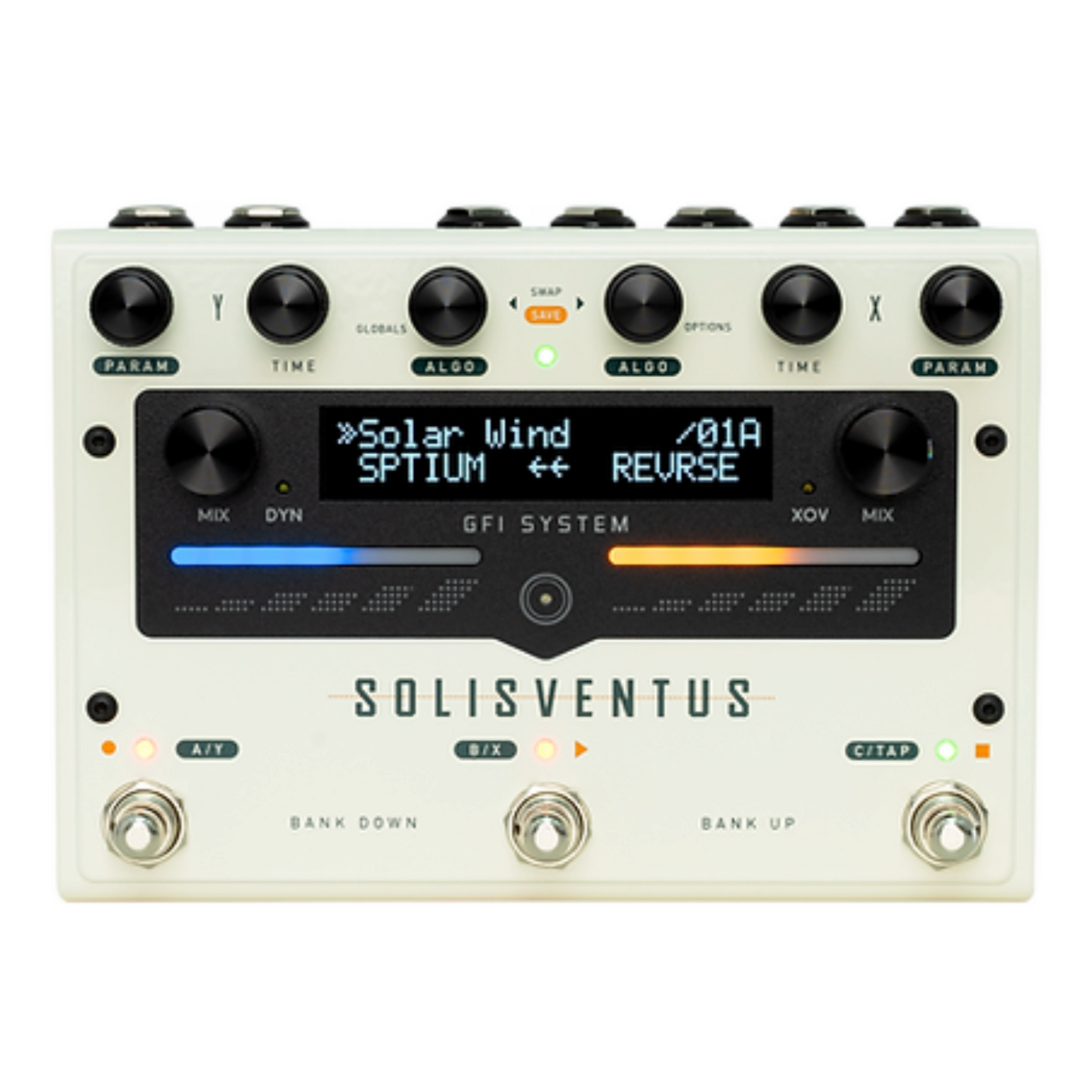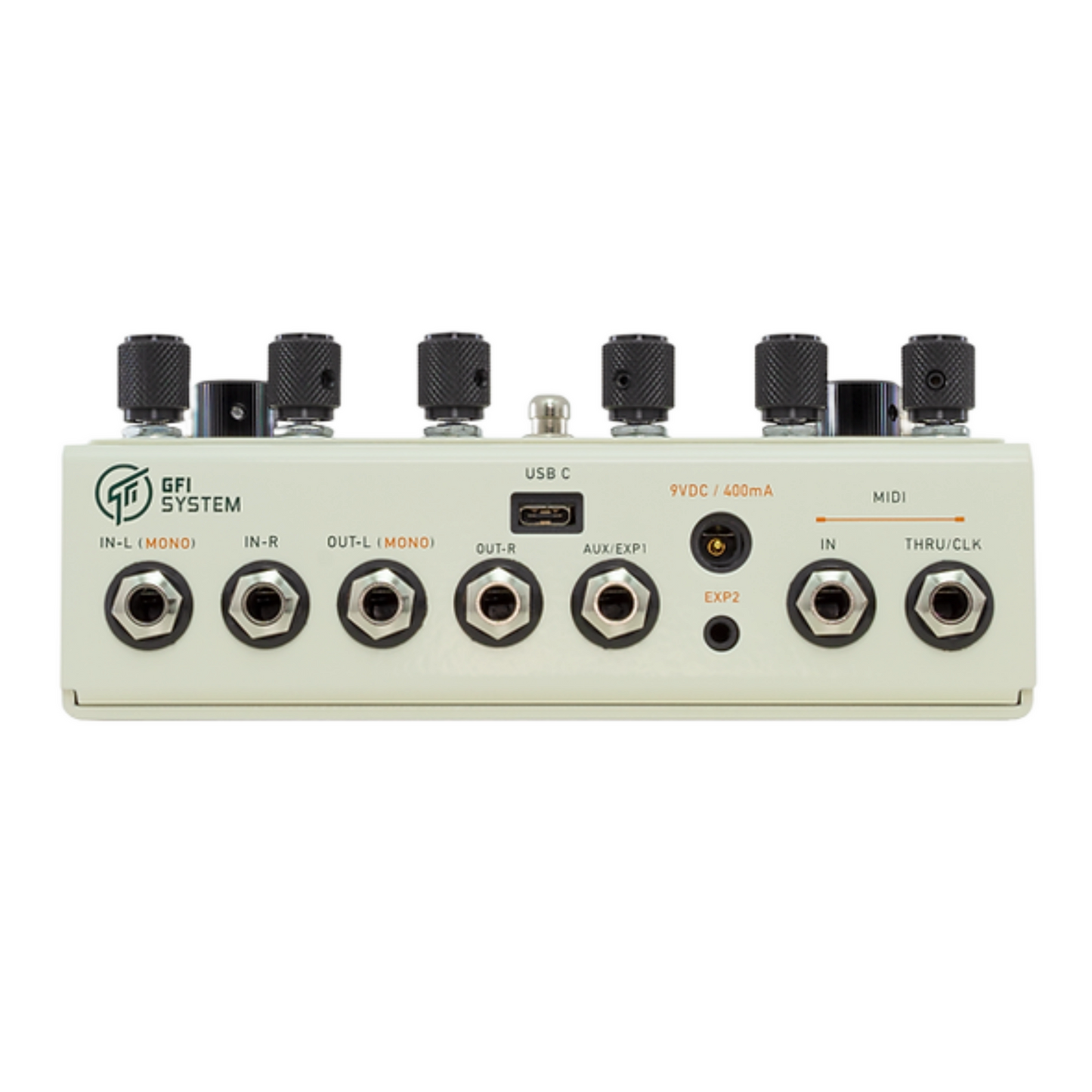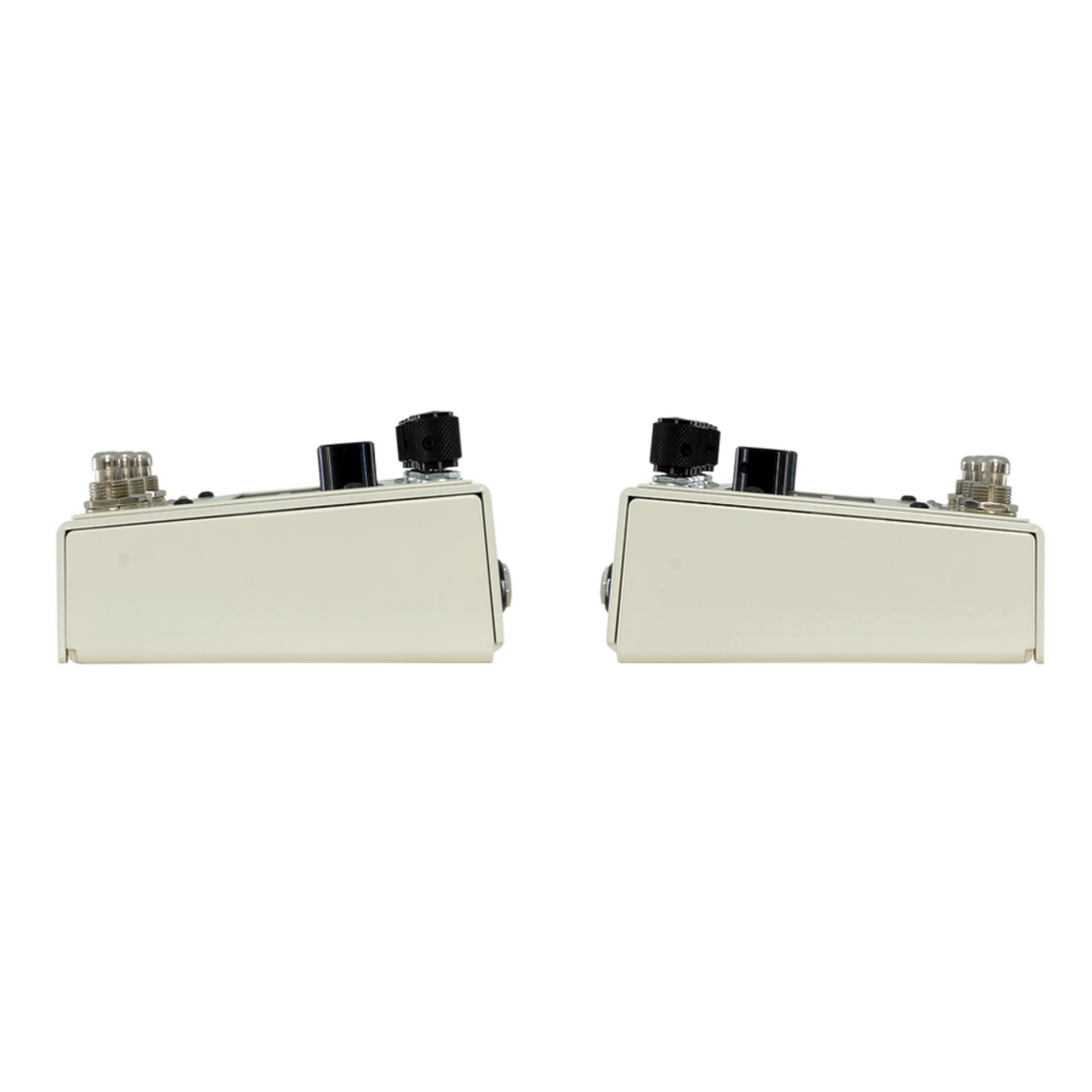GFI System
Solis Ventus
Solis Ventus
FREE 2Day Shipping
FREE 2Day Shipping
USA Free 2 Day Shipping
(Next Day in New England)
Canada NOW FREE
Worldwide 30USD Flat Rate*(Wherever you are)
Flat Rate means no additional charge for more than one pedal.
No Hassle Returns
No Hassle Returns
Pedal Features
Pedal Features
- Dual engine Delays and Reverbs.
- Runs two algorithms simultaneously.
- Achieve any delay-delay, reverb-reverb, or delay-reverb pairing, in any order.
- Analog dry-through.
- 96 presets.
- True spillover and bypass trails.
- Flexible routing: Series, Parallel, and Dual Mono.
- Flexible usage: Preset Mode or Stompbox Mode.
- Stereo Looper (40 seconds).
- Instrument Level and Line Level.
- Aux switches control input.
- 2 expression pedal inputs (with CV compatibility).
- MIDI Input and MIDI Thru/Clock.
- High-contrast OLED display.
- Input impedance: 1 MOhm.
- Output impedance: 500 Ohm.
- Volume trim: +/- 3dB.
- Max input level: +7.23 dBV = 9.45 dBu = 6.5 Vpp.
- SNR: 115 dB typical.
- AD/DA: 24-bit, 40 KHz.
- Bypass: Buffered or True Bypass (selectable).
- Output jacks : 1/4 inch TS.
- Input jacks: 1/4 inch TS.
- MIDI Input / MIDI Thru jacks: 1/4 inch TRS.
- USB connector : Type C
- Dimension : 17 x 12 cm (6.7 x 4.6 inch)
- Power requirement : 9V DC / < 350mA, negative-center plug (power supply is not included).
Couldn't load pickup availability
Dual‐engine Delay and Reverb pedal
Solis Ventus is able to run two algorithms at once, with arbitrary pairings, ordering, and routings. A special 'Stompbox Mode' dedicates one footswitch to control the on/off state of each engine, effectively turning the Solis Ventus into a quick and dirty two-stompbox setup. And as always, external control devices may be used to open up even more interactive possibilities.
A switchable crossover filter allows you to split the input signals into two frequency bands, one frequency band is routed to DSP X and the other band is routed to DSP Y.
This band splitting allows the X and Y engines to run the algorithms on different frequency bands, a wonderfully effective tool for creating unique moods and textures. You can even modulate the cutoff frequency via MIDI for an otherwordly effects!



This is fantastic, less menu diving than I thought, it is complex of course but you can get amazing sounds relatively easy, love this pedal so far, makes excellent pair + Dream 65
I've used a Timeline as long as I can remember. TSA did their thing and finally broke it after 10 years of travel. I was planning on replacing it with another Timeline, but decided it could be a cool opportunity to try something else. I bought the Solis Ventus based on the recommendation of a friend and am pretty happy so far. It's a decently complicated pedal so the editor helps a bunch. There's some magic in the Timeline that I'm not sure if this will replace but as far as capabilities go this one has it beat. The fidelity of the effects is impressive along with the vast amount of delay/reverb engines. I updated the pedal as soon as I received it and so far I have encountered any of the quality issues that can come with this pedal. If you're wanting to try something new or interested in consolidating you delay/reverb I'd recommend giving this pedal a try!









